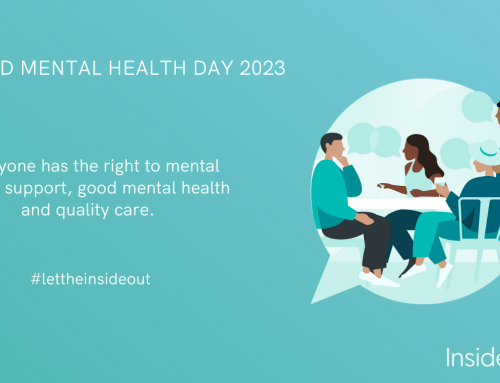The prevalence rate of workplace stress and other mental challenges is on the increase – if you’re feeling a little overwhelmed, perhaps suffering with low mood or are worried about a work related or personal matter, rest assured you are not alone. In fact, 1 in 4 of us are reportedly undergoing struggles that no one knows about at any given point in time.
How many times have we asked colleagues if they are OK and they have responded with ‘I’m fine’ or ‘I’m OK’ and the conversation has ended? A lot I would guess! When we look at it like this, it’s not hard to see why people suffer in isolation. I suspect we are all guilty of not taking the time to really understand how people are feeling.
In this blog post, we explore the art of active listening. Active listening is the process of being present and engaging with another person without judgment, be that a friend, colleague or family member.
This simple 5-step approach will help you hone your active listening skills.
- Pay attention
Be present in the conversation and try not to be distracted by your own thoughts. If you’re seemingly elsewhere, it may put the other person off talking to you. Put the mobile away, find a quiet space and get a drink to sit down with. Take note of any key words that you feel could be indicators of their mental state and assess their body language – this may tell you more than what they are saying.
- Show that you are listening
Look at the other person and try to maintain eye contact with them, so long as culture permits. Use visual clues that you are taking in what they are saying, this may be facial expressions or words like “ummm”, “I see” and “yes”. Try to exhibit empathy – put yourself in the other person’s place and focus on what is being said. Be aware that what being said my prompt emotional triggers for you.
- Demonstrate your understanding
Check you have fully understood the situation by asking questions to validate your understanding. You may also like to paraphrase back to the other person what they have said to you e.g. ‘this is what I am hearing, is this accurate?’. Where possible try to establish emotional rapport, this helps the speaker feel heard at a deeper level.
- Resist judgment
It’s really important to create a neutral environment and not to pass judgment or react to what is being said to you. Pay attention to your own emotions and try not to jump to any conclusions. Always allow the speaker to finish before asking questions. If you are a quick thinker and talker, be mindful of this. If the other person is struggling with depression or stress, you may find they are slower to think, process thoughts and communicate. Know yourself and be patient with others!
- Respond appropriately
It’s not your role to offer advice, so don’t feel that you have to. More often than not, people just want someone to talk to. Don’t be afraid to listen to what they have to say. Before offering help, ask the other person if they are open to receiving it – you may find they just wanted to off-load what was bothering them and talk to someone.
If they are accepting of help, there are lots of really good charities that support all areas of mental health e.g. MIND, Frank and the Samaritans – a quick Google search will help you locate a suitable charity if you feel pointing the other person towards a support network would be beneficial. Similarly, InsideOut is always on hand to help.
Always end the conversation with thanking the other person for speaking up – it reinforces positive communication going forward.
There you have it, 5 easy steps to active listening. When you are next grabbing a coffee with a colleague or chatting to them in the office, go ahead and ask them if they are really OK, give them 5 minutes of your day and don’t be afraid to listen to their response. Remember, you don’t have to offer advice, just lend a caring ear and perhaps signpost them to InsideOut.
Author: Laura Stembridge






